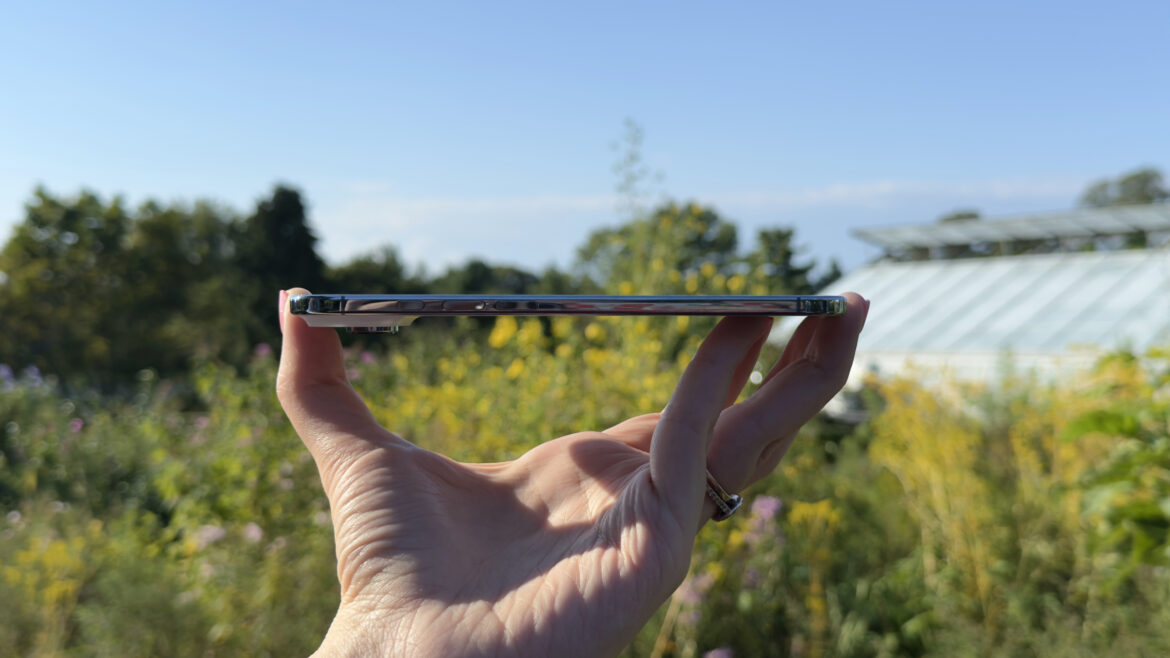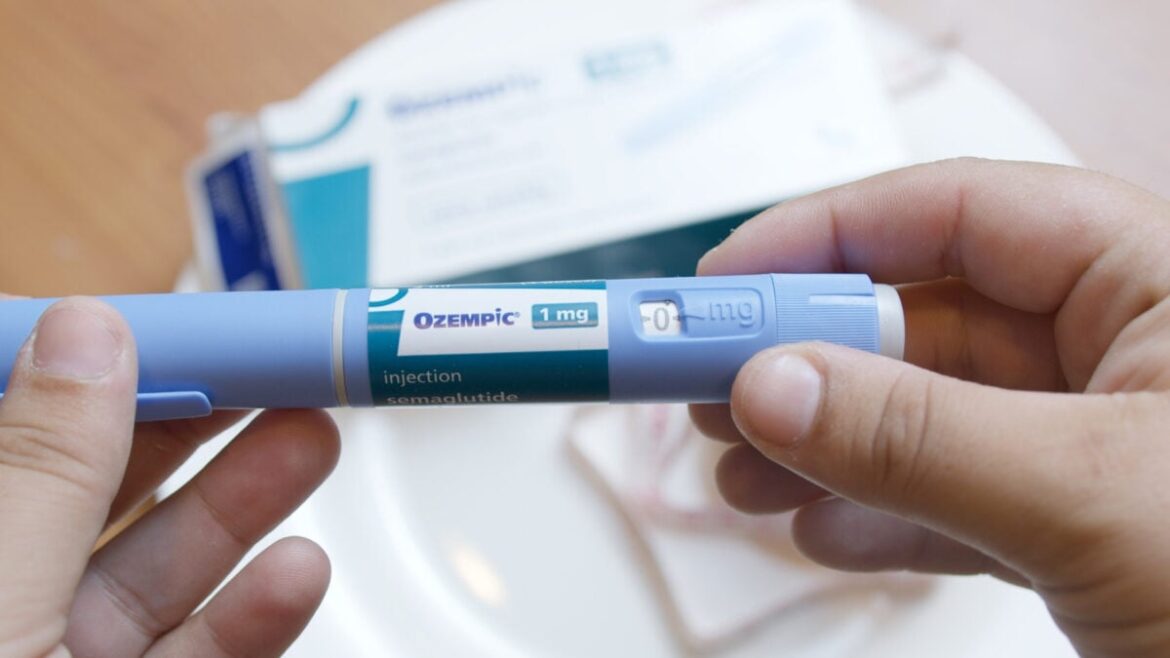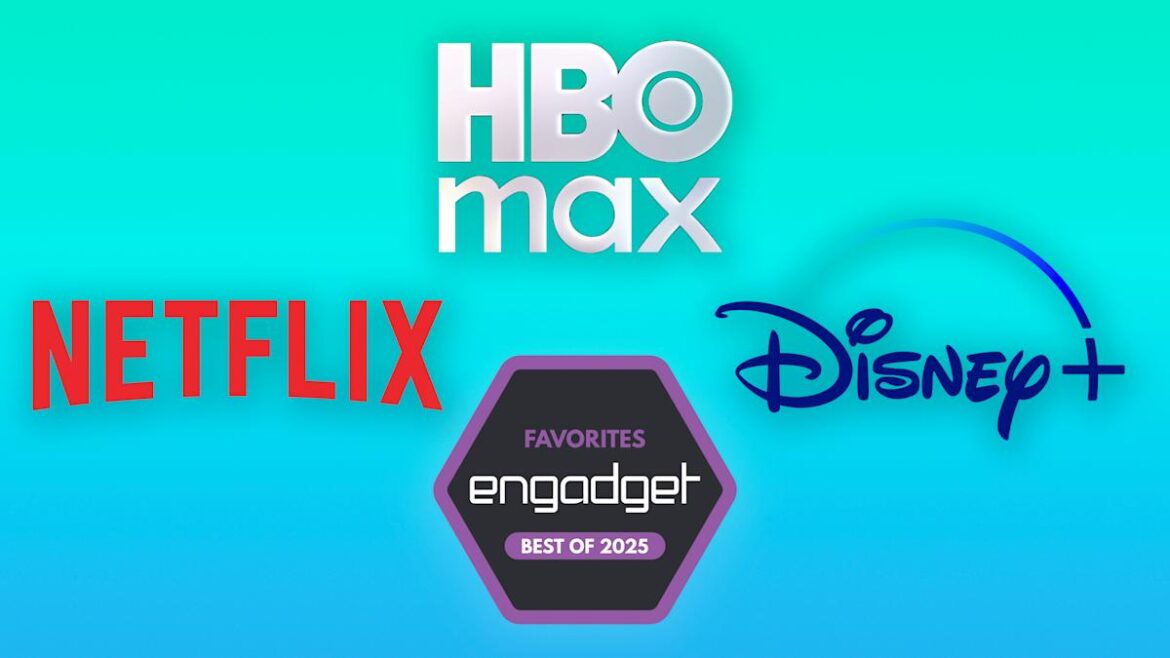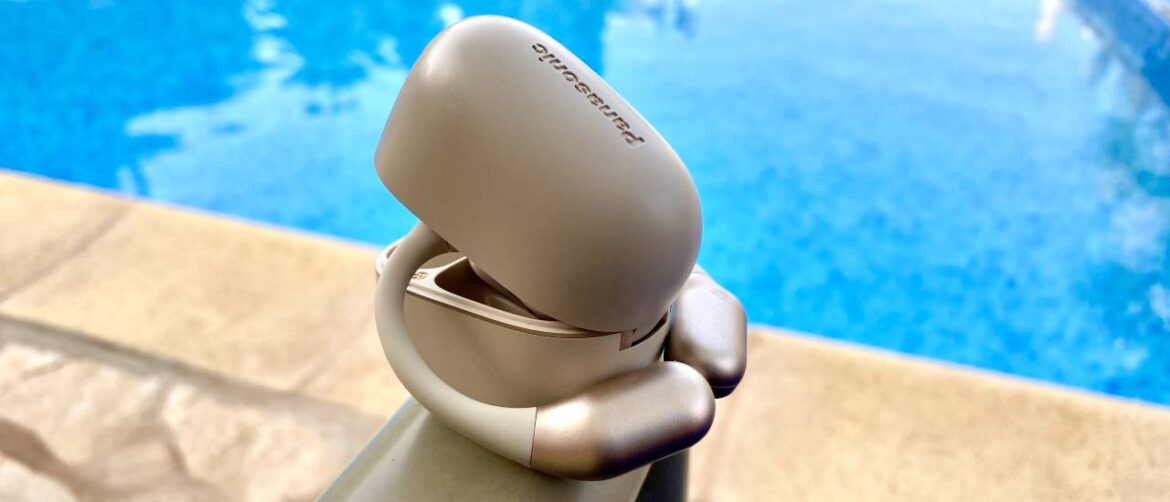Why you can trust TechRadar
We spend hours testing every product or service we review, so you can be sure you’re buying the best. Find out more about how we test.
Apple iPhone Air: Two-Minute Review
The iPhone Air is, to a degree, exactly what we were expecting: Apple’s thinnest iPhone ever, measuring just 5.64mm. It feels light, balanced, and durable thanks to a grade 5 titanium frame and Ceramic Shield glass. In the hand it’s sleek and refined – I’ve been using my Sky Blue unit for a week now and it’s still turning heads.
The 6.5-inch Super Retina XDR OLED display is excellent: it’s an always-on display that supports ProMotion, HDR, and brightness up to 3,000 nits. It’s slightly bigger than the iPhone 17’s screen, which gives apps, text, and videos more room to breathe, and it looks great whether I’m scrolling TikTok, watching HDR movies, or just browsing outside on a sunny day.
iOS 26 feels tailor made for the Air, with its new Liquid Glass design that looks striking and complements the physical build. Messages now support custom backgrounds, typing indicators, and polls, while the Phone app and Visual Intelligence get useful upgrades. And while Siri’s full AI overhaul isn’t here yet, Apple Intelligence features are starting to appear.
The biggest trade-off comes with the camera setup: there’s just a single 48-megapixel lens on the rear of the phone. It produces sharp, natural-looking photos and impressive portraits, but you’ll miss the flexibility of a telephoto or ultrawide if you’re used to them. The selfie camera is excellent, though, with Apple’s Center Stage smarts for automatic wide and ultrawide framing, and Dual Capture is genuinely fun.
Performance from the A19 Pro is snappy and smooth, and it capably handled everything I threw at it, though the phone does get warm during fast charging or heavy gaming. Battery life is decent but not class-leading: enough for a workday, usually six to eight hours of use, with my best stretch hitting around 10 hours away from the charger. Power users may want to invest in the $99 / £99.00 / AU$159 MagSafe Battery Pack, which matches the phone’s slim profile and adds about 65% more life, but it’s an added cost.
The iPhone Air isn’t the best iPhone for photography or endurance, but as a design statement, it’s a gem. It feels like the most exciting iPhone Apple has released in years, and while it costs more than the iPhone 17 with fewer cameras and shorter battery life, it delivers value in other key areas.
Apple iPhone Air: Price and Availability
Apple unveiled the iPhone Air at its September 9, 2025, ‘Awe Dropping’ event alongside the iPhone 17, iPhone 17 Pro, iPhone 17 Pro Max, AirPods Pro 3, and three new Apple Watches. The Air, though, stands out with its entirely new design, and is a whole new category of iPhone.
It starts at $999 / £999 / AU$1,799 for 256GB of storage, or you can bump that up to 512GB for $1,199 / £1,199 / AU$2,199, or 1TB for $1,399 / £1,399 / AU$2,599. The iPhone Air is an eSIM-only device worldwide and comes in four colors: Sky Blue, Light Gold, Cloud White, and Space Black. I’ve been testing a 1TB iPhone Air in Sky Blue.
Apple will officially launch the iPhone Air on September 19, 2025, but it’s up for pre-order now from the company’s online store, authorized retailers, and carriers.
Apple iPhone Air: Specs
Swipe to scroll horizontallyHeader Cell – Column 0
iPhone Air
iPhone 17
iPhone 17 Pro
iPhone 17 Pro Max
Weight:
165g
177g
206g
233g
Display:
6.5-inch OLED
6.3-inch OLED
6.3-inch OLED
6.9-inch OLED
Resolution:
2736 x 1260
2622 x 1206
2622 x 1206
2868 x 1320
Refresh rate:
120Hz
120Hz
120Hz
120Hz
Peak brightness:
3,000 nits
3,000 nits
3,000 nits
3,000 nits
Chipset:
A19 Pro
A19
A19 Pro
A19 Pro
Rear cameras:
48MP wide (26mm, ƒ/1.6)
48MP wide (26mm, ƒ/1.6), 48MP ultra-wide (13 mm, ƒ/2.2)
48MP wide (24mm, ƒ/1.78), 48MP ultra-wide (13 mm, ƒ/2.2), 48MP telephoto (8x optical zoom)
48MP wide (24mm, ƒ/1.78), 48MP ultra-wide (13 mm, ƒ/2.2), 48MP telephoto (8x optical zoom)
Front camera:
18MP (ƒ/1.9)
18MP (ƒ/1.9)
18MP (ƒ/1.9)
18MP (ƒ/1.9)
Storage:
256GB, 512GB, 1TB
256GB, 512GB
256GB, 512GB, 1TB
256GB, 512GB, 1TB, 2TB
Colors:
Space Black, Cloud White, Light Gold, Sky Blue
Black, White, Mist Blue, Sage, Lavender
Silver, Cosmic Orange, Deep Blue
Silver, Cosmic Orange, Deep Blue
Apple iPhone Air: Design
(Image credit: Jacob Krol/Future)
- The freshest look that Apple has delivered in years
- Unbelievably thin and light
- Feels great in the hand with proper ergonomics
If you were following the Apple rumor cycle, we were all expecting an ultra-thin iPhone to be released – one that would potentially go thinner than the iPhone 6 or 6 Plus, be more stunning than the iPhone X, and offer a truly refreshed look and feel for the iPhone. The launch event’s ‘Awe Dropping’ tagline set the bar high – and the iPhone Air cleared it with room to spare.
It’s not the first ultra-thin phone – the Galaxy S25 Edge measures in at 5.8 millimeters – but it still feels as stunning, sleek, and sexy in my hand right now after living with it for a week as it did during my brief hands-on session following the launch event. It feels as exciting as the iPhone X, in that it might give us the playbook for the modern iPhone going forward – or at least show us one half of the purportedly incoming foldable iPhone.
The photos released by Apple, and even those shot by me for this review, only do it partial justice. The iPhone Air is the best representation yet of Apple’s vision for an iPhone that’s just glass. It weighs in at just 5.82 ounces, or 165 grams, fully justifying the ‘Air’ moniker. Much like the iPhone 17 or even a Pro Max, it feels balanced – not too top-heavy, not too bottom-heavy. It’s Goldilocks ergonomics.
I don’t know if I’d quite call it awe-dropping, but the thinness is the part that gets people excited. At its thinnest, the iPhone Air is 5.64 millimeters, or 0.22 inches, and the ‘plateau’ (Apple’s new term for the camera bump) only juts out a bit more. I was instantly wowed, and over the course of a week (well, eight days now), I’ve really become accustomed to this look and feel for an iPhone.
(Image credit: Jacob Krol/Future)
While conducting some testing over the week, I showed it to my brother and sister-in-law, who were both visibly impressed when holding it. They asked about durability and were a little stunned at the overall feel. Then came the questions about battery life and the camera – both of which I’ll address below – and whether the USB-C port was thinner.
On that last point – it’s still a regular USB-C port, but to fit it in this frame and get it this small, Apple’s design team started by 3D-printing a custom one. And given how thin this phone had to be, Apple went back to grade five titanium for the shell and sides of the device. To further enhance the looks, it has a polished finish. My Sky Blue review handset is different from the MacBook Air and iPad Air colors of the same name – it’s a bit lighter and pastel-like. I really like it, and the Air also comes in Light Gold, Space Black, and Cloud White.
While the innermost layer of the iPhone Air sandwich is made of that strong titanium, which can bend slightly under pressure but is designed to spring back, it’s topped and bottomed with glass and glass ceramic; specifically Ceramic Shield 2 on the front and Ceramic Shield on the back. The rear, like the iPhone 17, is mostly frosted matte glass, while the top bump gets the glossy finish.
Apple says the Air is three times more scratch-resistant on the front – though I’ve still been careful sliding this in and out of my front or rear jeans pockets – and the back is four times more crack-resistant.
I actually did drop it on concrete paving stones, and the iPhone Air came out completely unscathed. My dog Rosie pulled me suddenly, I dropped the Air, and it hit the ground on the top-left corner and then landed screen-down, single camera-up. Not even a scratch. Rosie was off the hook.
That incident, along with our Editor at Large Lance Ulanoff’s bend test and his fumble with the iPhone Air, gives some credence to Apple’s durability promises. Apple says the iPhone Air is more durable than any model before this and on par with the rest of the 17 lineup. In a test behind closed doors at Apple Park, I saw an iPhone Air put through the wringer, receiving a simulated force of 130 pounds, and bending and then springing back with no visible stress marks left.
It also has the same IP68 rating for resistance to dust and water as the iPhone 17, 17 Pro, and 17 Pro Max – it survived a light drizzle shortly after I unboxed it at Apple Park. The weather’s been wet in my home state of Jersey, and the Air has shown no issues when being used in rain or surviving a dunk test.
Even given the extreme thinness here, you still get the usual buttons you’d expect on an iPhone. Camera Control (still not a button) has been redesigned to live on the right-hand side, and it’s slightly thinner but about the same length as on other iPhones. The power/sleep button sits slightly higher on this side, with the Action Button, volume up, and volume down on the left. The main mono speaker lives at the top with some microphones, and there are two other microphones either side of the USB-C port on the bottom.
This design does, as mentioned, only leave room for a single camera, and likely a smaller battery inside, but Apple has also dropped the SIM card slot worldwide and opted for eSIM to save some space.
The iPhone Air is stunning, attracts a lot of admiring glances, and feels like the biggest refresh in iPhone design we’ve seen in a while. Yes, it’s the same key parts, just compressed; but in use it feels like the perfect showcase for iOS 26. If you’re after Apple’s best design this year, I think it’s clearly the iPhone Air – but there’s a lot more to this iPhone than just looks.
Apple iPhone Air: Display
(Image credit: Jacob Krol/Future)
- At 6.5 inches the front is virtually all screen
- It’s on a par with the displays on the Pro and Pro Max
For $999 / £999 / AU$1,799 it would be a little mean of Apple not to include ProMotion or always-on functionality here, and the iPhone Air supports both. As a whole, the screen here is basically in line with those of the iPhone 17, 17 Pro, or 17 Pro Max.
The front of the iPhone Air is nearly all glass, except for a thin black bezel that turns into the sloped polished side. It’s a 6.5-inch Super Retina XDR OLED display with a resolution of 2376 x 1260, which works out to 460 pixels per inch. It tops out at 3,000 nits of brightness when needed, supports the Wide Color P3 gamut and HDR, and features an anti-reflective coating. It also has the same Dynamic Island as the rest of the iPhone 17 line.
In daily use, the display is really the main appeal here – on paper, it’s 0.2 inches bigger diagonally than the iPhone 17 or 17 Pro, but it feels a bit more expansive. It offers more lines of text, or a slightly expanded view when viewing a webpage. Games or movies feel a little more like an event, and it offers a broad canvas for iOS 26. Lay two of these phones side by side and I think you’d have some idea of what Apple is planning to bring us with its long-rumored folding iPhone – and it would look mightily impressive, but we’re not quite there yet. And it’s still smaller than the Pro Max.
Colors looked punchy and vibrant, text was inky black and crisp, and it was a great display for daily use. I found that it got bright enough to battle the bright sunshine of California, the late summer sunshine of New Jersey and New York, as well as bright artificial lighting. I liked scrolling TikTok and Instagram Reels, or watching a video on it, mainly thanks to the super-smooth ProMotion display.
And iOS 26, with its Liquid Glass makeover, looks fantastic here.
Apple iPhone Air: Software and Apple Intelligence
(Image credit: Jacob Krol/Future)
- Liquid Glass runs well here and feels purpose-built for the design
- iOS 26 brings with it some really smart features
I have a feeling that the design team at Apple knew the Air was on the roadmap when designing Liquid Glass.
iOS 26 is running on the iPhone Air out of the box, and as on any iPhone, announces itself with a ‘Hello’ on the first boot. You’ll get a sense of the new translucent, glass-like nature of the software pretty quickly. It’s mostly visible in how notifications refract over your wallpaper or up top, with whatever is behind the element. I especially like the way the bottom menu bars look with this, although legibility can be an issue at times, depending on what’s behind the element. You’ll also notice a difference if you use light mode or dark mode.
The redesign is only a portion of iOS 26, as Apple’s latest OS introduces a number of new features. I’m keen to put many of the new parts of Messages to the test with my friends and various group chats. With the latter, you’ll now get typing indicators, and you can set a custom background for any Message group or individual. This will, I have a feeling, be an especially tough test for legibility with the Liquid Glass components. You also have the option to add polls in group messages, which is a fun way to decide on activities or maybe pick a restaurant.
The Phone app is entirely new, though you can switch back, placing your favorites up top and below that is a combined list of outgoing and incoming calls, missed calls, and even voicemails. It can be a lot to process at first, but after months on the beta I’m more or less used to it, although I have switched back to the original setup occasionally, as the new one makes voicemails a little harder to track down. You can also use Live Translation during calls, which can be helpful for international travel, and I especially like the wait-on-hold feature.
Visual Intelligence, which is engaged with a long press of Camera Control, is a bit smarter here, and can now identify events to add to your calendar and integrate with apps that add support with the API. However, we’re still waiting on the full AI-powered Siri, and many of the new Apple Intelligence features aren’t front and center here.
You can check out our full guide to iOS 26 here, as there’s a lot more to dig into.
Apple iPhone Air: Camera
(Image credit: Jacob Krol/Future)
- Single-lens 48MP Fusion camera on the rear
- You can get some impressive shots, especially portraits
- Front-facing camera is 18MP with Center Stage
This is where the compromises necessitated by the iPhone Air’s unfeasibly thin design begin: the iPhone Air only features a single, 48-megapixel Fusion camera on the back. It can shoot at 1x, a sensor crop in 2x, or a maximum digital 10x, but the quality falls off noticeably with the latter.
I’ll cut to the chase here – if you’re after the iPhone with the best cameras, or even just some variety for shooting, this is probably not it.
I was impressed with some of the shots I took, particularly the one taken from 36,000 feet out an airplane window in the gallery below – the Air captured a surprising amount of detail around the engine, wing, and even the clouds, and what appears to be a mountain in the distance. The night mode worked very well when capturing my Bernedoodle, the aforementioned Rosie, and I’m especially impressed with the Portrait mode here, and the work going on behind the scenes to deliver the right bokeh effect in the right spot.
Still, as someone who used a 16 Pro Max before this, I miss the telephoto camera, even if that wasn’t a Super Res Zoom like on a Galaxy or a Pixel; 2x isn’t a lot. The iPhone Air also doesn’t have an ultra-wide or a macro camera. If anything, it’s made me think about the types of shots I’d want to capture with a phone, and if an ultra-wide or zoom is a deal breaker for you, you’ll want to look at the 17 or the 17 Pro duo.
The 48MP Fusion camera here can capture photos at a full 48 megapixels or, by default, a 24-megapixel photo that saves space by combining a 12-megapixel shot and a 48-megapixel shot. It normally does a pretty good job of preserving colors and details, and is something that Apple’s been doing for several generations of iPhone.
The main lens here does an admirable job, and I’m quite happy with some of the images I got – particularly in portrait mode, with the camera keeping colors within a realistic range and not skewing warmer or cooler, as well as capturing plenty of the finer details.
In some cases, photos looked a bit washed out – for instance, landscapes on particularly sunny days, as when I took test shots at a botanical garden (although I was able to capture a sunflower quite nicely, other fauna, and even orange fish below a less-than-crystal-clear pond). Mostly, though, the camera can capture those more vibrant moments, such as a shot of Yankee Stadium or the sunset from a plane window.
Without a true telephoto or an ultrawide, you’re able to take more creative control to capture unique shots. You can see a full gallery of test images – standard photos at 1x or 2x, and some digital zoom ones, as well as Portraits at 1x or 2x – below.
(Image credit: Jacob Krol/Future)
A new feature that takes advantage of the 18-megapixel Center Stage camera on the front and the rear camera is Dual Capture. It’s not a brand-new idea, and essentially this lets you record with the front camera and rear camera at the same time, with stabilization applied. I think it’s a lot of fun, especially for sports events, where you could capture both the on-field action and the reaction of you and your friends, and I imagine it would be a blast at concerts – I could record myself belting out Born to Run along with the Boss – but also for parents with young children.
The 18-megapixel selfie camera uses a larger image sensor than on previous iPhones, and it’s actually super helpful. Essentially, it can automatically adjust a wide or ultra-wide view so you can easily fit everyone into your selfie or video, and with the tap of a button you can rotate between vertical and horizontal without needing to physically rotate your phone. It also delivers a serious, high-quality selfie.
I’ll include some video samples below – the 48MP camera isn’t a slouch here, and performs on a par with the standard iPhone 17. The end result is either up to 1080p HD at up to 60 frames per second, or 4K at up to 60fps.
Image 1 of 24
(Image credit: Jacob Krol/Future)(Image credit: Jacob Krol/Future)(Image credit: Jacob Krol/Future)(Image credit: Jacob Krol/Future)(Image credit: Jacob Krol/Future)(Image credit: Jacob Krol/Future)(Image credit: Jacob Krol/Future)(Image credit: Jacob Krol/Future)(Image credit: Jacob Krol/Future)(Image credit: Jacob Krol/Future)(Image credit: Jacob Krol/Future)(Image credit: Jacob Krol/Future)(Image credit: Jacob Krol/Future)(Image credit: Jacob Krol/Future)(Image credit: Jacob Krol/Future)(Image credit: Jacob Krol/Future)(Image credit: Jacob Krol/Future)(Image credit: Jacob Krol/Future)(Image credit: Jacob Krol/Future)(Image credit: Jacob Krol/Future)(Image credit: Jacob Krol/Future)(Image credit: Jacob Krol/Future)(Image credit: Jacob Krol/Future)(Image credit: Jacob Krol/Future)
Apple iPhone Air: Performance
(Image credit: Jacob Krol/Future)
- The iPhone Air feels responsive and fast, even with more intense workflows
- A19 Pro chip should keep it running smoothly for years
- Can get warm on the camera bump with gaming and other more intensive tasks
Powering the iPhone Air is Apple’s A19 Pro chip, which is a step up from the iPhone 17’s A19, and a slightly less powerful version of the A19 Pro in the iPhone 17 Pro and 17 Pro Max, without the extra cooling technology. The A19 Pro here is a 6-core CPU with two performance and four efficiency cores, a 5-core GPU, and a 16-core Neural Engine.
It’s a good lick faster than the A18 Pro or A18 found in the iPhone 16 Pro Max or 16, especially with various elements of iOS 26 – including spatializing a wallpaper – and in everyday use. Compared to the standard iPhone 17, I’d say performance is about neck and neck. The A19 Pro is arguably being used here to help regulate performance temperature.
I did notice the iPhone Air heating up during the first few days while it was still indexing and charging – especially from 0% to about 50% – before cooling as it slowed near 80%. It also warms up when multitasking with demanding apps at times.
For example, if I’m on a call and launch a game like Asphalt 9, the area around the camera housing on the rear can get noticeably warm, though it cools quickly as performance regulates. The heat doesn’t spread below the Apple logo, and a case, like Apple’s Bumper or Clear option, helps keep it from your fingertips.
Keep in mind that basically all the components do live in the plateau – including the silicon – so it makes sense that the area does heat up. When it comes to non-gaming tasks, though, the iPhone Air handles everything well, and delivers strong performance while keeping cool. That was the case with my daily workflow consisting of calls – audio and FaceTime – as well as Mail, Gmail, Slack, Safari, Chrome, Edits, Capcut, the Camera, and other apps. Even with creating a Genmoji or using Image Playground or another facet of Apple intelligence, the iPhone Air didn’t get especially warm.
In terms of quantitative testing, the iPhone Air scored slightly higher than the iPhone 17 on GeekBench 6.5, at 3,723 on single-core and 9,665 on multi-core. That’s in line with smartphones at this price range, though, as we noted in our Galaxy S25 Edge review, that phone has a thermal solution for keeping things cool.
Apple iPhone Air: Battery
(Image credit: Jacob Krol/Future)
- It can deliver all-day battery for some, but more likely will last a full workday
- You’ll likely need to recharge it during the day
- While costly, the MagSafe Battery is a sound investment
We can only guess at the iPhone Air’s battery size for now, as Apple doesn’t officially release those numbers. It’s clear, though, that the company has squeezed as large a cell as possible inside this ultra-slim smartphone.
Instead of capacity, Apple provides viewing estimates: up to 27 hours of downloaded video playback and 22 hours of streaming. With the $99 MagSafe Battery attached, those numbers rise to 40 and 35 hours, respectively – about a 65% boost.
In my experience, the iPhone Air generally lasts through a workday – six to eight hours depending on use. That’s behind the iPhone 17, 17 Pro, and 17 Pro Max, but it still meets Apple’s “all-day” standard. On one test, I took it off a charger at 7:30am and it lasted until 5:50pm, or 10 hours and 20 minutes. At best, I recorded six hours and 35 minutes of active screen time; on average, I got around four hours and 45 minutes.
During my first few fast charges, the top of the camera plateau and the area beneath it did get warm, mostly between 0% and 50%, before cooling down. This isn’t unusual for fast charging and reflects the component layout.
Power users will likely need to recharge by the time they get home. Apple’s slim MagSafe Battery nearly matches the Air’s profile, adding only a bit more thickness than the camera bump. It recharges intelligently throughout the day, manages heat well, and uses pocket detection to optimize charging times. Optional, yes – but it complements the iPhone Air experience nicely.
Apple iPhone Air: Should you buy?
Swipe to scroll horizontallyiPhone Air Score card
Attributes
Notes
Rating
Design
The iPhone Air is Apple’s most exciting refresh in years.
5 / 5
Display
The iPhone Air’s 6.5-inch Super Retina XDR OLED is punchy, sharp, and smooth with ProMotion and Always-On functionality.
5 / 5
Software
iOS 26 feels tailor-made for the iPhone Air.
4 / 5
Camera
The iPhone Air relies on a single 48MP lens that delivers sharp, natural photos and impressive portraits, but lacks the versatility found on other models.
4 / 5
Performance
The iPhone Air feels fast and smooth in daily use, though it can warm up under sustained heavy gaming.
4 / 5
Battery
The iPhone Air should last a workday, but heavy users will need to recharge.
4 / 5
Value
At $999, the iPhone Air feels like a new kind of Pro – trading camera and battery versatility for design.
4 / 5
Buy it if…
Don’t buy it if…
Apple iPhone Air: How I tested
I’ve been covering smartphones for years — including iPhones since the iPhone 8 lineup — and my first personal iPhone was the 3GS. For this review, I set up the iPhone Air in Sky Blue, moving my number over from an iPhone 16 Pro Max via eSIM and starting fresh.
Over more than a week of testing, I put the Air through everyday use: calls, streaming music, gaming, watching TV and movies, capturing photos, and running my usual suite of work apps. I measured performance using both real-world applications and benchmarks, such as GeekBench 6.5, paying close attention to how it handled multitasking and more demanding workloads. For battery life, I tracked how quickly it drained during different tasks and also ran a standardized assessment.
On the camera side, I pushed the single 48MP rear lens through its paces — testing 1x, 2x crop, Portrait, and Night modes, plus video recording up to 4K at 60fps. I also spent time with the new 18MP selfie camera, trying both portraits and group shots, and had fun with Dual Capture for video.
To get a clearer sense of how it stacks up, I compared the results directly with the iPhone 17, the iPhone 16 and 16 Plus, iPhone 16 Pro and 16 Pro Max, Google Pixel 10 and Pixel 10 Pro, and Samsung’s Galaxy S25 Ultra.
First reviewed September 2025.










